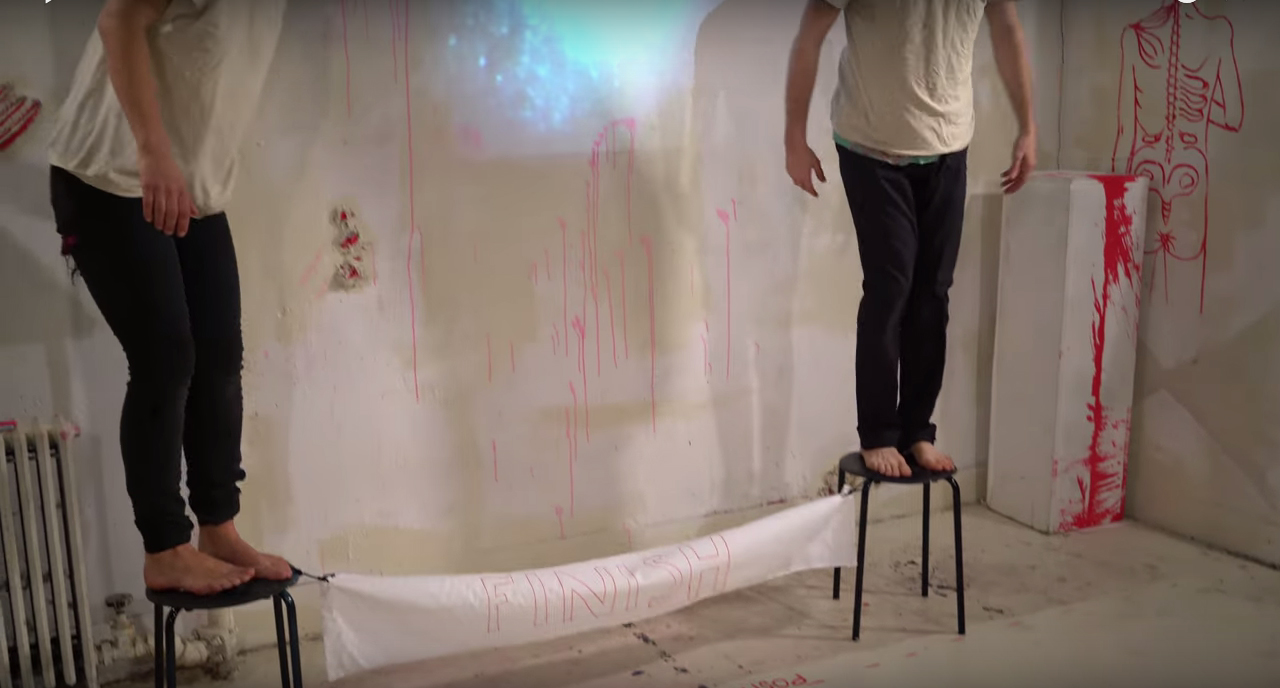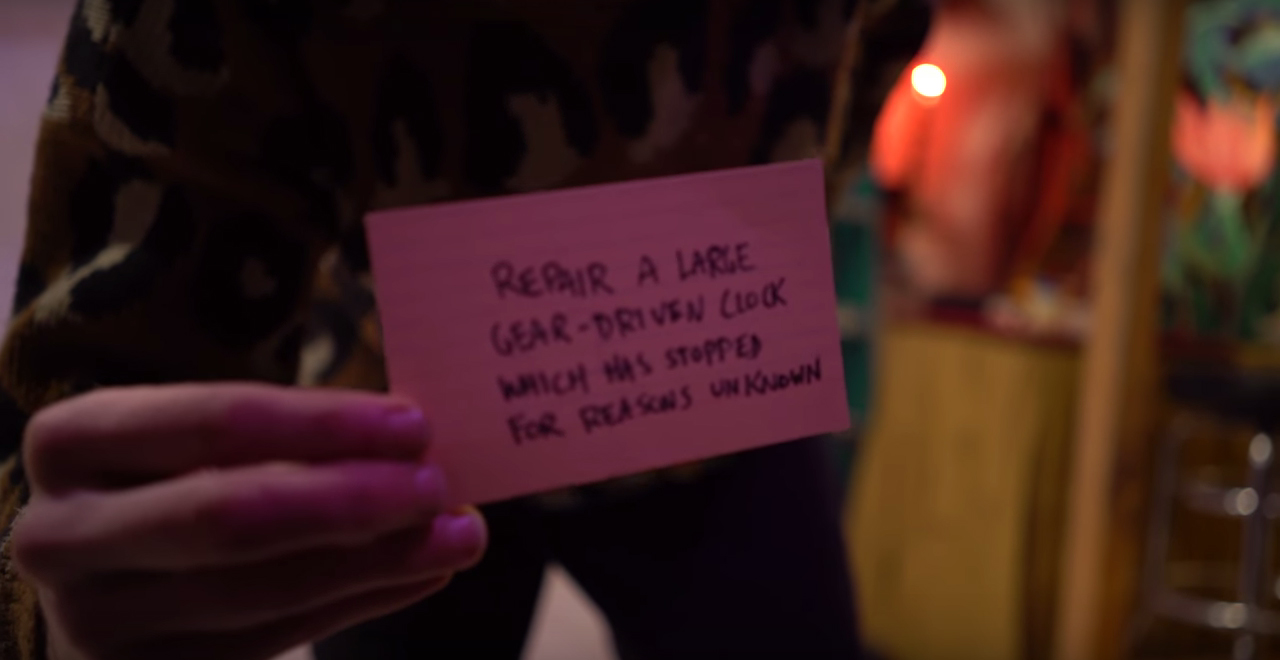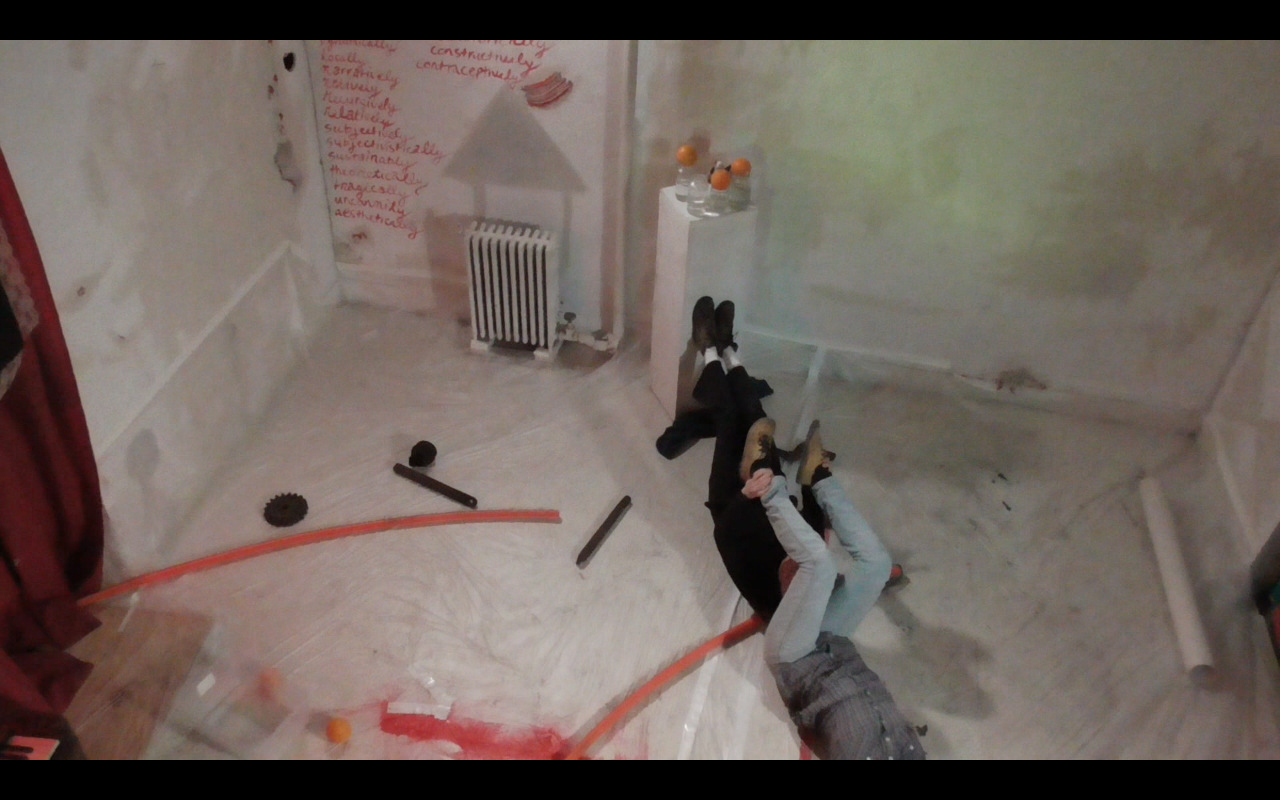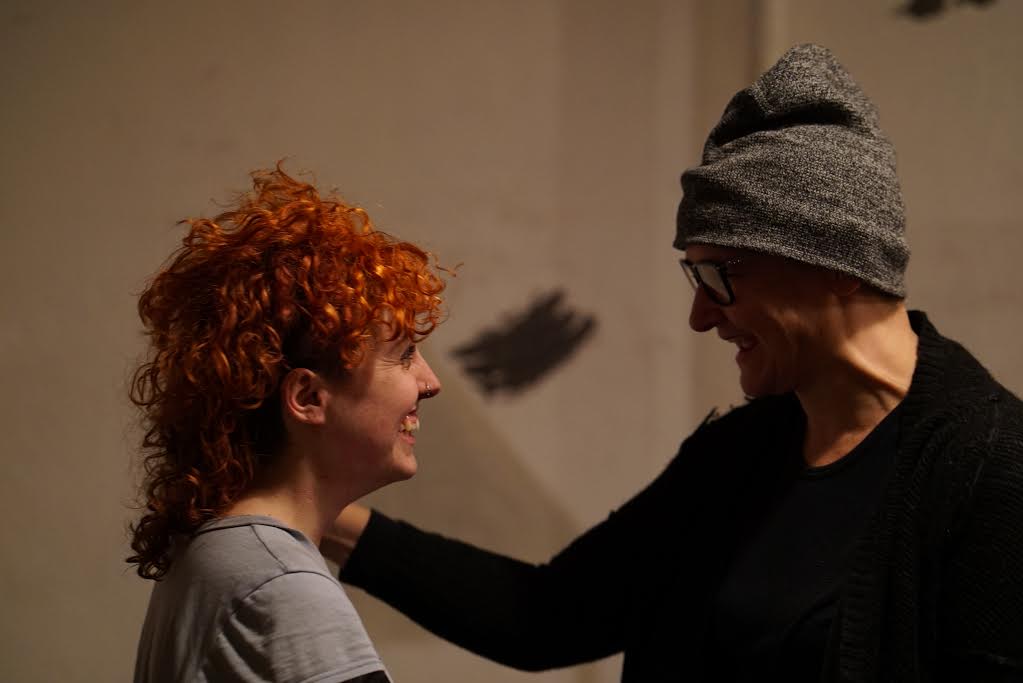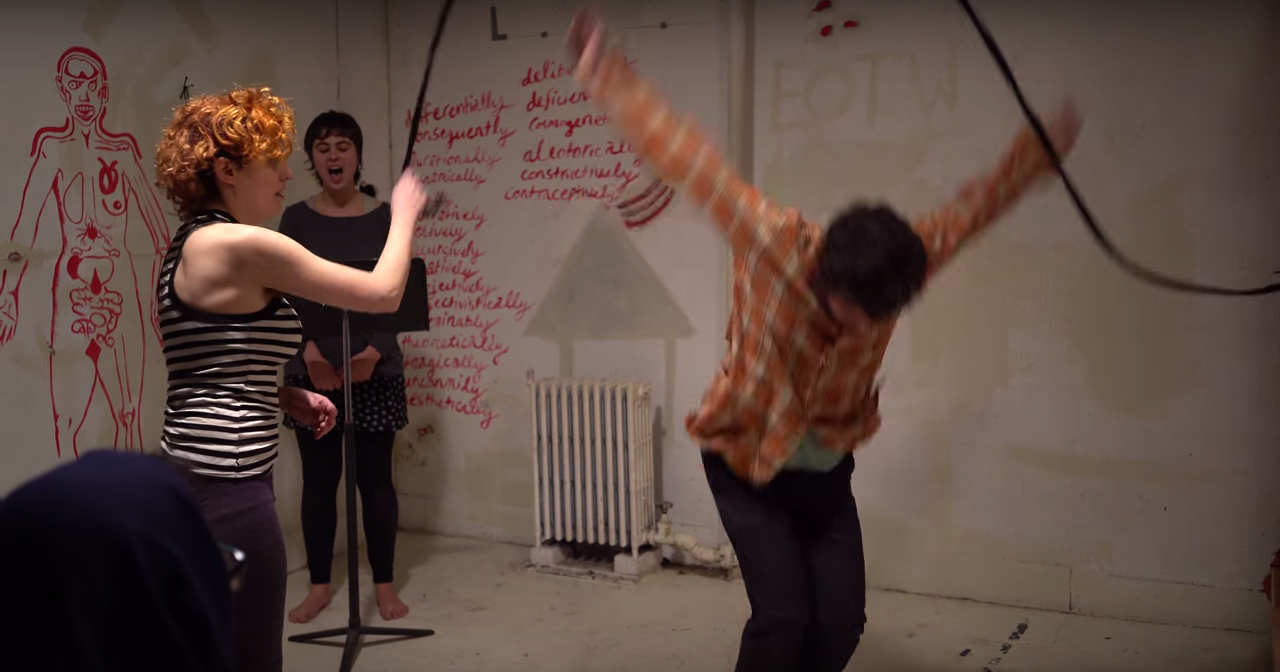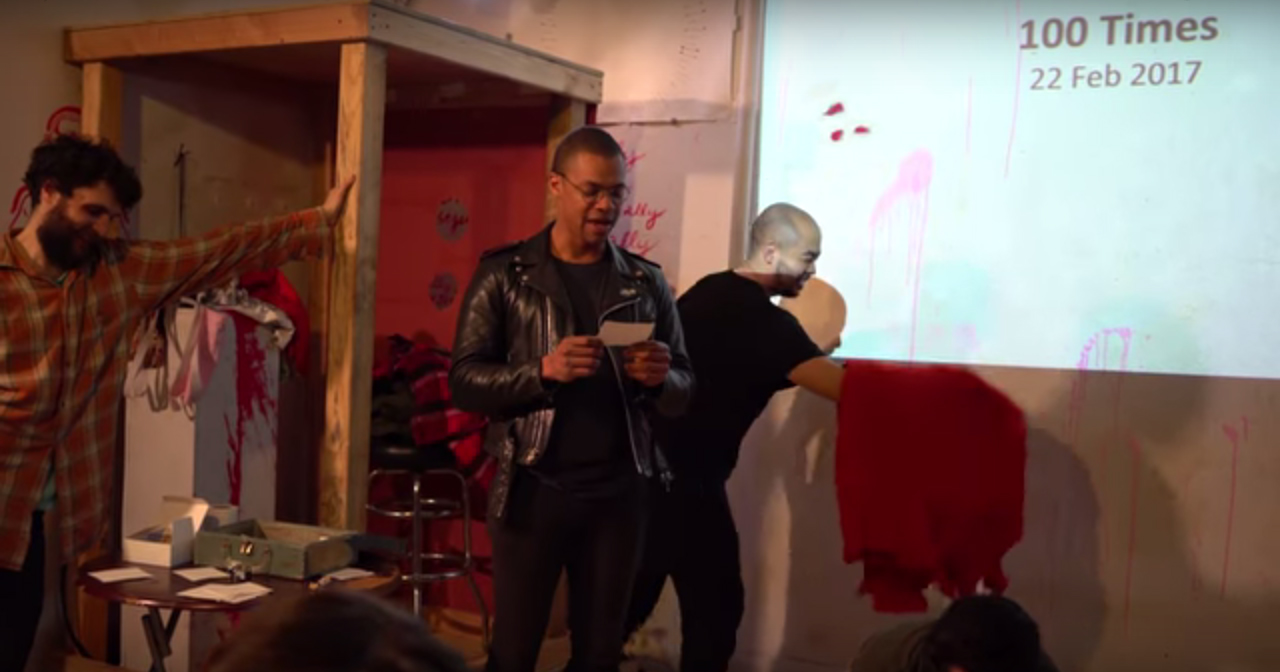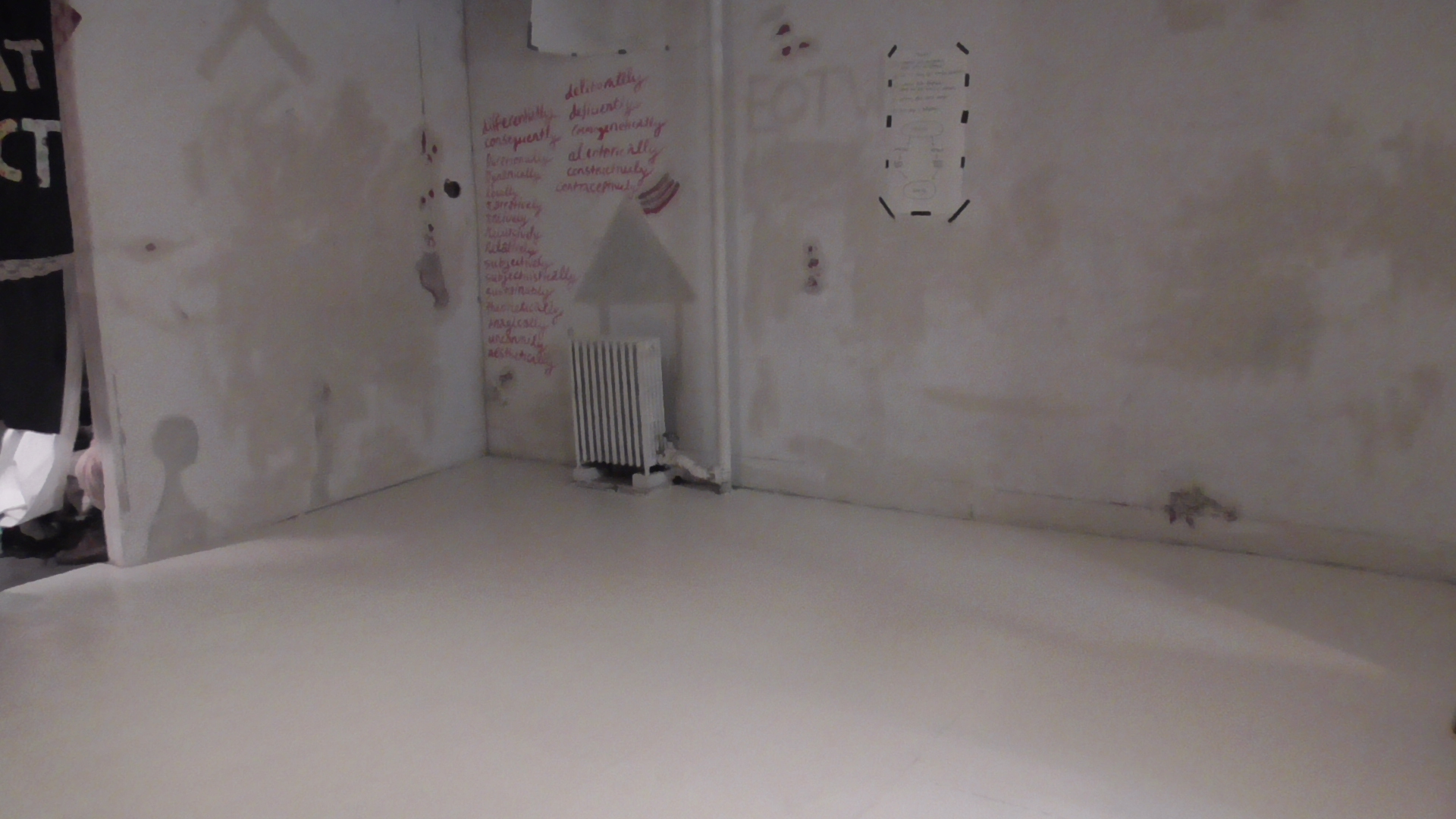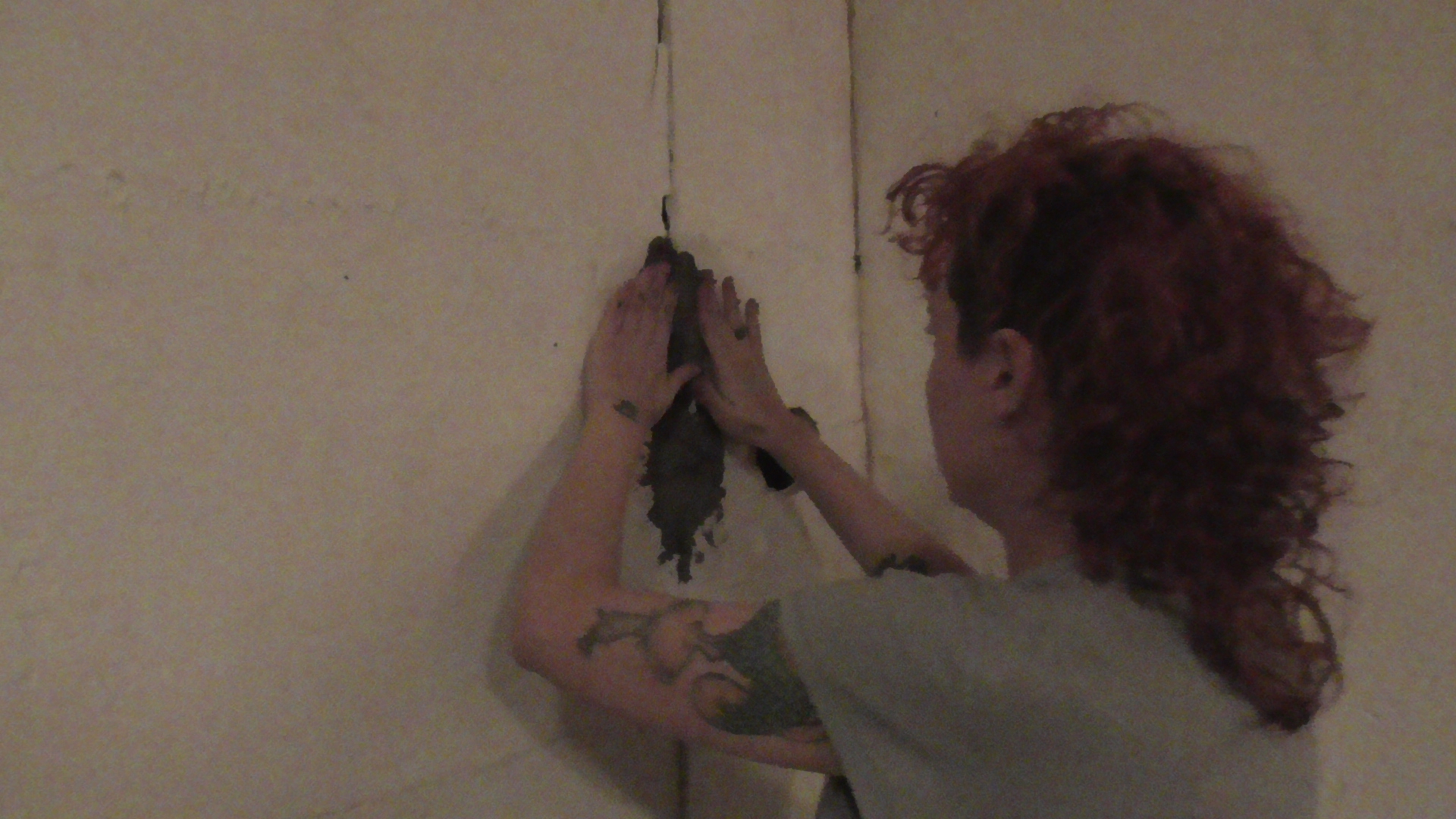PLAYLIST OF ALL VIDEO FRAGMENTS

HEIDEGGER’S INDIANA
Created by PPL (Panoply Performance Laboratory)
for The Exponential Festival, released November-January 2021
Text, sound, editing, direction by Esther Neff
Performance by Kaia Gilje and Esther Neff
Videography by Esther Neff and Kaia Gilje
All video fragments (1-12) and the final work may be viewed as a Playlist on YouTube @PanoplyLab titled HEIDEGGER’S INDIANA. The final work as edited for the January 2021 festival is shown on January 28, 2021 and is thereafter accessible on the Exponential Festival YouTube channel. A final “postmortem” or “excess” video (10/12) will be released in February, 2021.

PROGRAM TABLE OF CONTENTS
General Project Description
A NOTE ON 1) SOME WAYS IN WHICH HEIDEGGER’S PHILOSOPHY IS BOTH ALIGNED WITH AND DIRECTLY DIVERGENT FROM NAZISM AND WHAT I MIGHT CALL (GALLOWS HUMOR) “HOOSIER IDEOLOGY,” 2) ON THE RELEVANCE OF HEIDEGGER AS A FIGURE AND ON HIS USE IN THIS PROJECT, AND 3) SOME CONCLUSORY THOUGHTS ON HIS ACTUAL PHILOSOPHICAL INQUIRIES AND METAPHYSICS IN GENERAL…
12 text frames/extant libretto
~ GENERAL PROJECT DESCRIPTION ~
Martin Heidegger was a German metaphysical philosopher in the idealist tradition, predominately inquiring into what being means and what it means to Be. During the third reich, Heidegger acted as a sympathizer and maintained his University position. Previously, he had a love affair with his student, Hannah Arendt, a Jewish philosopher of mind and meaningfulness who would later theorize relationships between fascism and metaphysical conceptualizations of nature, self, and society. Heidegger’s context and his philosophical ideas are the basis of this project, although his complex positions are read through Arendt (and subsequently Butler and other influential poststructuralists influenced by Heidegger; Badiou has remarked that Heidegger is the last “universally known” e.g. imperial Western philosopher). More absurdly however, this project attempts to perform its own metaphysical problems both as “transcendent” and as “empirical,” as inherently imbricated with political ideation, geography, and subjective fears, memories, decision-making faculties, mentalities, and meaning-makings.
“Indiana” is a US state mapped across Pawnee, Miami, Piankashaw, Potawatomi, and Wea territory. The land has been occupied by a steady stream of European colonizers, migrants, and refugees, including Amish and Anabaptists (Mennonites, Quakers, Brethren) through German Catholics. In the 20th century, Jewish refugees were prevented from settling in many small Indiana towns, especially those which have been known as “sundown towns,” with historic municipal laws or at least threatening signage prohibiting Black (and sometimes also Chinese, Latinx, and other POC) residency, entrance, or (hence the name) warning against public movement after dark. Indiana is currently a solid “red state;” Mike Pence was the governor before becoming vice president under Trump. As a little personal context, perhaps it’s worth sharing that I (Esther) grew up on a small farm outside of Goshen, Indiana (historically a sundown town) and is of Swiss German (Brethren) and Jewish descent. Although Brethren are fundamentally pacifist (and unlike other neighbors have participated in abolitionist movements, similar to the Quakers), my grandfather broke with his family’s pacifist values to fight in WWII, where he was injured in a vehicle accident.
Heidegger’s Indiana emerges as a disintegrated treatise on the desirata of conceptualizing meaningfulness in the face of nihilism and connecting philosophical beliefs with behaviors.
Through layers of found footage, stacks of citations, and the dense physicalities of social isolation, the videos mark and unmark passages, stare (back) into the arbitrary terror(ism)s of Midwestern rural whiteness and Euro-phallic philosophy, and theatricalize disessentializing (Verwesung, decomposition + deposing of the suprasensory world and its “essences”) towards (non)enduring in particular, ethos-and-eros-driven ways. Of particular deconstructive focus is Nihilism, which Heidegger calls “a historical movement, and not just any view or doctrine advanced by someone or other. Nihilism moves history after the manner of a fundamental ongoing event that is scarcely recognized in the destining of the Western peoples.” (Heidegger, Martin. 1977. “The Word of Nietzsche” in The Question Concerning Technology and Other Essays. Translated by William Lovitt. New York: Harper & Row. p. 62)
~A NOTE ON 1) SOME WAYS IN WHICH HEIDEGGER’S PHILOSOPHY IS BOTH ALIGNED WITH AND DIRECTLY DIVERGENT FROM NAZIISM AND WHAT I MIGHT CALL (GALLOWS HUMOR) “HOOSIER IDEOLOGY,” 2) ON THE RELEVANCE OF HEIDEGGER AS A FIGURE
AND ON HIS USE IN THIS PROJECT, AND 3) SOME CONCLUSORY THOUGHTS ON HIS ACTUAL PHILOSOPHICAL INQUIRIES AND METAPHYSICS IN GENERAL… ~
Martin Heidegger romanticized rural life and the Volk, believing that “mechanization” or “technological” modes of thinking-being needed to be transformed into more “essential” states of Being. He connected these essential states with Greek ideas of poesis and drew on Nietzsche to claim these ideas as the roots of Western (and specifically German) history, culture, and language. He believed that the German people—due to language—were best suited to prepare humanity for a state of “god,” which is not a deity but a divine artistic “dwelling” or mode of “fourfold Being” (re)uniting humans and (“our”) true nature. While Heidegger did initially speak out against scientific/genetic categorization of race, he was deeply bigoted in that he believed that peoples outside central Europe were less a part of history and did not have the “poetic” prerequisites to cause or “prepare for” his version of sacred essential nature, which he sometimes calls “the mystery.” This bizarre form of nativist linguistic nationalism (Heidegger saw Jews and Roma people—as immigrants and transient peoples—as contaminants of or impurities in the sacred essential spirit of human Being) is contradictory with other white supremacist/white nationalist and colonial mentalities that locate “Others” as closer to nature, more primitive, etc, and remains a conflict within contemporary “thought” in the US and Europe (that is, who and where people “belong,” who is “native” to where, and who is “replacing” or “occupying” whom as well as who is “closer to nature.”) Here, Heidegger’s ideas connect the most violent mentalities that may be currently seen in the geo-ideological state(s) of Indiana with ideas complexly and diffractively embedded in the poststructuralist thought of which he is considered the “grandfather,” (as well as in almost every political and legal debate over personhood and human rights, from trans rights through citizenship structures) through the sense of distinction between “natural” or “essential” Being and “technological” or “constructed” being.
Desire for and faith in a “natural order,” a turning away from “construction” has many different implications. When these desires and faiths are correlated specifically with idealist philosophy and interpreted through white/Euro nationalisms (as Nietzsche and Heidegger have been), they historically tend to entail a search for god-like mythical leaders from basketball coaches through confederate generals through QAnon; Heidegger was a great admirer of Hitler the man, participating in a fervent hero worship similar to that which has accompanied Trump. This hero worship stems from belief that “man” (e.g. the projected overman, a living corporealization of the superman, the spirit of manifest destiny and pure culture embodied) must be saved from replacement and mechanization, that he is being divested from “rightful dwelling,” which is described as sacred, pastoral, as small-scale, small-town agrarian, and thus “poetic,” “essential,” “ideal,” involving the cabinet-maker, the milk producer, the river sans hydroelectric plant, the local poet.
For Heidegger, “the danger” is in “Enframings” that are technological/mechanistic, homogenizing, nihilistic, including technology as colloquially understood and technological modes of thought and being. At first, Heidegger did blame “the Jews” for “technology,” but he also made a speech (in 1949) that conflated the Final Solution with factory farming (he was opposed to both, at least, though the comparison of human corpses to corn is bristle-worthy at the very least). Heidegger often discusses plants, animals, and people as if all are the same sort of raw material (“standing reserve”), in order to speak much more “metaphysically” about Technological (or “constructed”) modes of Being that prevent natures to be revealed in their essential meaningfulness.
Sometimes, this type of brutal abstraction, his metaphysical “transcendence,” can be useful in attempts to discuss the autonomous conceptual structures of political situations wherein the “enemy of that deemed essential” is always in co-constructive flux; when seen solely as a metaphysical inquiry, this idea is somewhat banal and basically a spiritual view, even an “environmentalist” view, definitely an accepted “poststructuralist” view. When politicized however, Heidegger’s thought designs and demands problematic inquiries into who and how and which groups of people, are most “natural” and who and what is seen to be advancing technology, i.e. who is holding the views that challenge the “safeguarding” of so-called pure “fourfold dwelling” of essential Being.
One can see how this thought and inquiry is “dangerous” when the role of “obstruction to essence” is filled by a group of people Enframed as such by orders of white supremacy, transphobia, homophobia, xenophobia, etc. Through insertion of these contemporary terms (which were not available to Heidegger) we can understand why he calls Enframings, Technological modes, or orders (what we might now call “paradigms” or “systems”) for value and totalities “the danger.” Additionally, one may also see how it can be “dangerous” to maintain faith in “essential Being” in any case. Heidegger does in fact encourage wariness of such paradigmatic modellings themselves, especially when they are used in blanket ways to reduce human Being to political conditions. He is, after all, discussing metaphysical Being in ways that (failingly, impossibly) attempt to transcend “the political.” His various arguments for the “integrity” of human essence, or soul beyond or above Enframings, are contingent with context, scale, and modality, and multiplicitly imbricated with language itself and how language produces, reveals, conceals, and crafts meanings and “truths” of and for being “itself.”
Often, in any case, Heidegger seems totally unconcerned with “actual people,” and prefers to discuss poetry rather than anything so “vulgar” as politics or human suffering. While Heidegger apologists will argue that this is because he was not a political philosopher at all, and others have already pointed out that this project’s mixing of fragmented metaphysics, political theory, psycho-epistemology, and poetry can only result in frustration, my feeling is that Heidegger’s poetic abstractions (and hopefully poetic abstractions of Heidegger) express and represent embedded and mimetic mentalities, positions, fears, and fundamentalisms which are inherently participant in political being. On the most concrete narrative level, Heidegger is also a prime example of a citizen who chose complicity with fascism, which makes him an emotionally fraught phantom character for a “play” unfolding in this particular moment (January, 2021). He also frequently changed his mind and can be located on many different “sides” of history, providing readers through time with different ways of seeing “virtue” as a kind of “technê” or “craft of life,” a matter that much concerned Heidegger conceptually but not so much practically. His forms of thought in context thus are weirdly fit to contents and become an affective cipher, with almost every statement he makes causing either a shudder or an epiphany, sometimes both simultaneously, and sometimes switchily upon different readings from hour to hour.
Finally, in terms of appropriating Heidegger’s philosophical inquiries themselves in and as “art,” I would argue that his most important position is not a position at all but a useful explication of a dramatic conflict. Basically, he is debating between two modes of being both differently seen as part of “human nature:” A) the idealistic need to transform being into the Nothingness of true, essential Being (which is natural, physical, non-metaphysical, the nihil itself) and B) the empirical “essential nature of ‘man’” to produce totalizing logics (technological thinking, mechanization of being, meaningfulness, metaphysics itself). The former Being is an unintelligible plentitude of potential ways of thinking, being, seeing, becoming (insights), while the latter is the conclusory, deadening project of “the machine” (oversights). While the former is “freedom” because it allows sacred, chaotic, and essential states of care and being-with to emerge, the latter is “the danger” because it establishes a singular essentialist clearing that obscures true Being, excluding all truths that are not shaped or shaping its own ideals while also producing the only sorts of meanings a subject may know. Through this conflict, Heidegger generates questions about “natures of human being” on multiple levels, many of which are difficult to cognitively access. Such generativity and access is, I believe, deontologically the project of philosophy, as such (further debates about why and if “philosophy” is valuable or useful at all, likewise art, may also ensue). It seems to me (the maker of this project) however, that certain core questions must be perpetually phrased and re-phrased, conflicts staged and re-staged, because the assumptions pursuant to any stable position on them or articulations of them have massive political, ideological, and material implications.
~12 TEXT FRAMES/EXTANT LIBRETTO~
1/12
Oral history rural interview project
this is the correct translation of basketball statistics
this is an uninhabited subdivision
there are rooms for binaries and a firepit
signage is already in place
what we are trying to understand here though is not what or how but
Why Is
anyone a “culture” or “cultured”
like corn?
2/12
You played so good son you almost transcended
It’s almost as if fate placed you here and not as if
Fate itself has been designed
By your existing state
3/12
This is the doll my grandmother always wanted me to have upon her death yet She is not dead (yet) and I have it anyway
I broke off its porcelain foot when I was five and my grandpa made a new one with putty His attitude generally was
Do things right the first time but
If within your best effort you make a mistake
Don’t be sorry, just fix it
Decomposition is more important than deconstruction
Don’t forget the past but digest it, each body is already compost
Just in case, a whistle is placed
Inside each casket
4/12
Kaia writes: what do we do with the stumbling half-being who is defined only by words we hate?
5/12
I am not a pocketknife
I think I misunderstood the part about “dwelling”
I forgot that “nothing” was a really formal concept
And I tripped over it
Blunting the blade in the gravel:
The fact remains, that Being is a problem for some people
Being is an issue, for some people, maybe for most people
Being seems inordinately cruel and unlikely, to people
A person has these subjective experiences however while a subject is solely set within the problems, issues, cruelties, and likelihoods or orders of their conditions
A person is a legal and political subject but subjectivity must not be reduced to conditions Sometimes a person is not a representative
No person’s actions are wholly symbolic or politically preventative
Our subject matter therefore should not only concern subjects but also their essences untold Subjectivities therefore should not be solely subordinated to the coordinates of cruel corridors Rather persons in particular must be permitted to think forward and to dwell in themselves fourfold
1) Being is an event in that it takes (appropriates) place (where one is at home, within one’s own sense-making)
2) One must be capable of anticipating death as death, expecting to drink of it as easily as if from the cup of the womb
3) Being must be felt as if one is figured into and configuring culturally-determined knowledges, which in-form open vessels of intelligibility from the sacred, thrown like clay pots on the wheel of time to hold human-ness
4) One must be held by no-thing, the positive matter of mystery and meaning, safeguarded by it and neither fight against it nor embed it in orders as a means of control
Martin, is it worth complicity to get across these thoughts
Who knows this sort of thing already, who needs to hear it
Does the “ear of our thinking hear the cry” or does
the fact remain that Being is not a problem for some people
Being is not an issue, for some people, maybe for most people, almost no people That thinking about Being seems complicated and unnecessary to most people A person has experiences, but does not question them because conditions already contain them
A person is a legal and political subject and subjectivity is fully and solely secured by these conditions
Sometimes, a person must act as a representative
Any person can sacrifice themselves symbolically or appear as a dissident, argumentative Our subject matter therefore should only concern subjects and their
Subjectivities subordinated to the coordinates of cruel corridors
Persons in particular must be subjected to the fetters of safekeeping that those And that
Deemed immoral
Impertinent
Impossible
Should be banished from the homebase the main state, released into death as easily as smoke from a furnace, formed into functions or else…
6/12
This is an Amish man talking about waking up in the morning
Eating pancakes, he doesn’t listen, something about mashed potatoes
He works in a factory
Sometimes the daily is interrupted by nightmares
An Indiana man would never mention these
Yeah, it’s appropriated footage
One time an Amish boy called my breasts “pancakes”
So there is a bit of an inside joke here lost in the steam
Created by pouring boiling water into pans inside a walk-in cooler
Steam, unlike gas, can be quite a spectacle and
Culture, unlike labor, is an especially productive technology
“This placement has a kind of imaginative manufacturing”
“Anyone and Anything can become a spectacle at any time”
(Amish German or “Pennsylvania Dutch” is a High German + English pidgin or “creole” language)
7/12
May world, in all its worldings near
Essentially unfold
As far from me as possible
8/12
Featuring: small-scale milk farmer John Davis and former Indiana governor Mike Pence A translation and interpretation of Heidegger, 1944:
Inauthenticity, the impossibility of really being there, or here, in relation to death, is also realized in thrownness, through fear, and in projection, through expectation. Fear, as a mode of disposedness, can disclose only particular oncoming events in the world. To fear my own death, then, is once again to treat my death as a case of death. This contrasts with anxiety, the form of disposedness which discloses my death via the awareness of the possibility of a world in which I am not.
There is the fear-anxiety dimension and there is the expectation-anticipation dimension. A mundane example might help to illustrate this generic idea. When I expect milk to taste a certain way, I am waiting for an actual event—a case of that distinctive taste in my mouth—to occur. By contrast, when I anticipate the taste of that milk, one might say that, in a cognitive sense, I actively go out to meet the possibility of that taste. In so doing, I make it mine. Expecting death is thus to wait for a case of death, whereas to anticipate death is to own it, to be authentic with it.
Thus, for me, to cause death is to fulfill my own expectations and anticipations, I am made authentic through my ability to cause the deaths of others. My fears and my anxieties are disposed via the deaths of others, and my true being is disclosed.
9/12
Most do not choose the distance between themselves and atrocity
Either one is right inside it, made of it or making it
Or one is far away from it, watching it
Yet this is a strange conception because if all is ordered by the political
(which means ways in which peoples are organizing)
(which means power play)
(which means governance)
(which means conditions of resource distribution and deprivation)
(which means hegemony)
(which means judgements and speech acts)
(which means bodies)
(which means power)
(which means)
Then nothing anyone does or is
Can by anything other than innocent or guilty
&
If this is the case, then one can only beg for mercy
10/12
TBD (based on responses and responsibilities)
11/12
Imagine this bad a capella choir thing as a high school anthem
Imagine you live here
This imagination has a kind of manufacturing of placement
This placement has a kind of imaginative manufacturing
Imagine you never read Heidegger
Why would one, really? The reading is going on all around Us anyway, every time you say something is a ‘construction’ His corpse rolls like your best friend’s eyes
When you tell her about your crush:
The last plank was on the fire, blackening
I was all worked up for a reckoning
You saw him elbow me in the face through the smoke but spoke of salmon runs
with a fake accent
appeasing the Indiana boys while my blood hopped into dusty crowns as it touched the ground
Martin says the essence of history is a fight against nothingness I say why is there a fight at all
Let it take me
I am both responsible and at your mercy
because of the drinking, I woke up
just as the angels drained my cup
the sun shot coronas over the river, saw
them deliver
an orb just off the canoe bow
like a phosphorescent jellyfish but somehow glassy
Martin says the essence of history is a fight against nothingness I say why is there a fight at all
Let it take me
I am both responsible and at your mercy
Please please understand, resolution
I desire, in sacrifice, an absolution
You saw him take the path of least resistance
These ways of burning up inside define my
Base existence
Seize my arm and tell me now, if you can change
Or disavow, the very ways that brought us here n
Force my decision
Martin says the essence of history is a fight against nothingness I say why is there a fight at all
Let it take me
I am both responsible and at your mercy
12/12
incessantly crying
I seek god! I seek god!
He scatters pancakes in the alleyway
Hides in his university office all day
Puts his boots on the traintracks, scurries back
To watch the mothers throwing their babies out the windows
Do their mouths look like little O’s, clay
Greek masks of the theater Killed onstage like prisoners
enacting the deaths of seditious orators
How noble, Sympathizer, do you think they really are inferior
incessantly crying
I see god! I see god!
He is deranged, dislodged, disowned
From the “level” of
The Body, the body politic, political embodiment
A metaphysical mote, whistling higher, higher
Floating on delusions of grandeur like a sour note
Above the staph that charts the graph of
Ongoing man-made disaster
Incessantly seeking an
Essence! An essence!
Without defense it may disappear
He asks what Being is Not what should a Being do,
there is no subject here




 November 16, 17, 18, 2018
November 16, 17, 18, 2018
 Embarrassed of the Whole (EotW) Phase III (click
Embarrassed of the Whole (EotW) Phase III (click  (image above: PPL during “Constance Vigilance/Our Social Eye(s)” at Glasshouse, June 23, 12am-12pm, photo by Brian McCorkle)
(image above: PPL during “Constance Vigilance/Our Social Eye(s)” at Glasshouse, June 23, 12am-12pm, photo by Brian McCorkle) JUST SITUATIONS will take place across two weekends in July, 2017 in Brooklyn, New York:
JUST SITUATIONS will take place across two weekends in July, 2017 in Brooklyn, New York:








